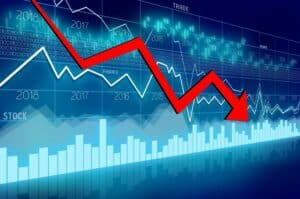Quick Look:
- Retail and industrial output exceed forecasts.
- Investment dynamics reflect sectoral shifts.
- Economic recovery faces uneven domestic demand.
China’s economic performance in the initial two months of 2023 has unexpectedly outstripped analyst projections, signalling a robust start to the year. Retail sales witnessed a 5.5% increase, surpassing the anticipated 5.2%, while industrial production soared by 7%, significantly higher than the expected 5%. Additionally, fixed asset investment climbed by 4.2%, exceeding analyst forecasts of 3.2%. This upswing in key economic indicators underscores the resilient momentum of China’s economic recovery, albeit with nuanced challenges in sectors like real estate and domestic demand.
Economic Indicators Showcase Strength
The detailed economic data released for January and February 2023 presents a compelling narrative of China’s enduring economic resilience. Retail sales, a critical gauge of consumer confidence and spending, outperformed expectations with a 5.5% increase. Industrial production, representing the output from China’s vast manufacturing and mining sectors, also showed significant strength with a 7% rise, indicating robust industrial activity.
Investments in fixed assets, including infrastructure, property, machinery, and equipment, grew by 4.2%, suggesting continued confidence in long-term economic prospects. Despite a 9% decline in real estate investment, reflecting ongoing adjustments in the property sector, investments in infrastructure and manufacturing rose by 6.3% and 9.4%, respectively, highlighting shifts in investment priorities towards sustainable growth sectors.
Sectoral Dynamics and Policy Implications
Analysts, including those from Goldman Sachs, acknowledge the solid sequential growth momentum in China’s economy through the first quarter despite the evident disparities across different sectors. They advocate for further policy easing, particularly targeting demand-side measures such as fiscal policy, housing, and consumption, to achieve the ambitious “around 5%” growth target set for the year.
Despite the positive indicators, challenges persist, particularly in domestic demand and the real estate sector, which remains in an adjustment phase. National Bureau of Statistics Spokesperson Liu Aihua emphasized the critical period of recovery, transformation, and upgrading facing the overall economy. Additionally, the finance sector saw a dip in new loans in February, signalling cautious consumer sentiment and underscoring the need for more targeted monetary policy easing to support household borrowing and stimulate the property market.
China Targets High-Quality Manufacturing
In a strategic pivot, Beijing has not announced substantial new support for the beleaguered real estate sector but has instead emphasized enhancing manufacturing and technological capabilities. This focus aims at fostering high-quality development and preventing inefficient investments, aligning with China’s broader economic objectives. With a manufacturing capacity utilization rate of 76% in the fourth quarter, efforts to upscale high-end manufacturing reflect a strategic decision to secure a competitive edge in the global market.
Economic Outlook
China’s economic landscape in early 2023 presents a mixed bag of robust growth indicators tempered by sector-specific challenges. The government’s strategic focus on manufacturing and technology, coupled with necessary policy adjustments, underscores a commitment to navigating the complexities of recovery and long-term development. As the world watches, China’s ability to maintain momentum while addressing internal and external challenges will be crucial in shaping its economic trajectory for the remainder of the year.











